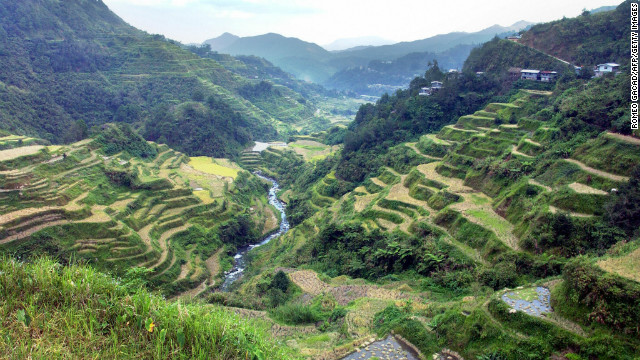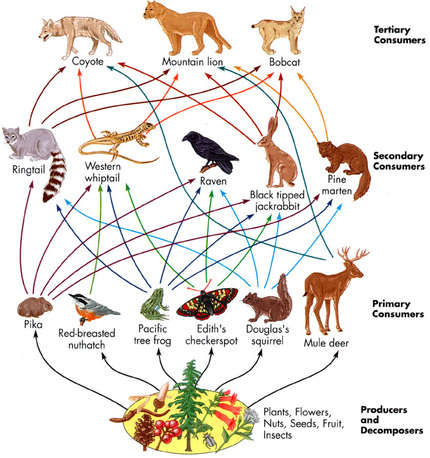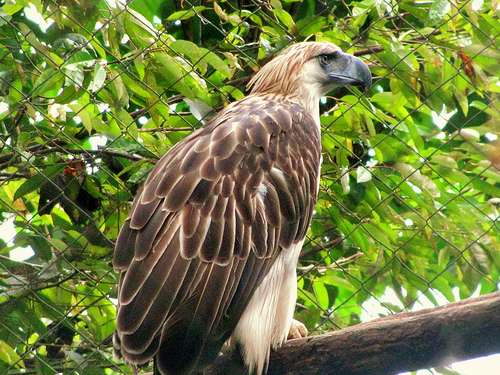As everybody knows, biodiversity is a huge part of the planet we call Earth. Biodiversity is the variety of life in the world or in a particular habitat or ecosystem. To be classified as a hot spot, it has to have lost at least 70% of its primary vegetation. What makes the Philippines full of biodiversity is that the terrestrial and marine habitats contain some of the richest diversities of flora and fauna (which refer to plant and wildlife),and its waters are considered a part of the bio diverse Coral Triangle, which is a marine area located in the western Pacific Ocean. The Philippines is a cluster of more than 7,000 islands, and are of volcanic origin. A large part of the terrain is mountains, with fertile soils and very spectacular landscapes. (Goldman)


Also, in the Philippines there is an island that is so amazing that no island has more to offer than the island province of Palawan. There are thousands of kilometers of unexplored forests and coastlines. However, this location is classified as tropical and subtropical dry broad leaves forest. Either way, since the Philippines is an island, it can also be called an aquatic ecosystem. Here are both terrestrial food web and aquatic food web:


The level of net primary productivity in these biomes are 7,600 kcal/m^2/yr., and 8,800. This Island has many types of ecosystems, ranging from coastal wetlands to upland region watersheds, so its hard to pick just one.
Not only do the Philippines contain biodiversity, it offers plenty of ecosystem services that are critical to the nation.The Philippines has a bounty of minerals, cropland, timber, and coastal and marine resources. These natural resources make up an estimated 36 percent of the nation’s wealth. Also, the patchwork of isolated islands, the tropical location of the country, and the once extensive areas of rainforest have resulted in high species diversity in some groups of organisms and a very high level of endemism. At the very least, one-third of the more than 9,250 vascular plant species native to the Philippines are endemic (this means growing or existing in a certain place or region)
In 2006, Catibog-Sinha and Heaney wrote that an estimated number of over 38,000 vertebrate and invertebrate animal species have been described within Philippine territory, with over half being endemic species. The number of plant species, meanwhile, ranges over 16,000 based on the latest data (as of February 2013) published by the Department of Environment and Natural Resources-Biodiversity Management Bureau (formerly the Protected Areas and Wildlife Burea). About 45% to 60% of these identified native vascular and non-vascular plants are endemic to the Philippines. Estimates are even higher for flowering plants found within primary forests, as 70% to 80% are endemic species.
On top of these numbers, the country also currently has the highest rate of discovery in the world – with no small thanks to its growing popularity as one of the world’s most biologically endowed, which has therefore inspired further research efforts. Indeed, among terrestrial mammals alone, at least sixteen new species have been introduced to science over the past decade.
On top of these numbers, the country also currently has the highest rate of discovery in the world – with no small thanks to its growing popularity as one of the world’s most biologically endowed, which has therefore inspired further research efforts. Indeed, among terrestrial mammals alone, at least sixteen new species have been introduced to science over the past decade.
As this paper demonstrates, the Philippines is undergoing much environmental degradation, mainly in the form of deforestation, soil erosion, over-exploitation of fisheries, destruction of coral reefs, and more. These problems are accentuated by the pressures of a large, fast-growing and impoverished population; and they may shortly start to be aggravated yet more by climatic change in the wake of the global ‘greenhouse effect’.
Here is a list of endangered animals in the Philippines:
Philippine Eagle:
The Philippine eagle (Pithecophaga jefferyi) also referred to as monkey-eating eagle, is an eagle subspecies that belong to the family of Accipitridae and is native to Philippine. These eagle display white-colored plumage together with the shaggy crest, averaging 86 – 102 cm (2 ft 10 in to 3 ft 4 in) in length. The weight of these species measure around 4.7 – 8 kg (10 – 18 lb). As far as the eagle’s length is concerned, Philippine eagle is the largest, harpy eagle and the stellar’s sea eagle being the other contenders. They are also regarded as the rarest and the most powerful birds in the world. Philippine eagle is also the national bird of Philippine. One of the foremost causes of the population decline is habitat loss or deforestation.

Philippine Tastier:
The Philippine tarsier (Carlito syrichta) also called Luzon is an endangered species that is endemic to the Philippines. These animals are found in the south-eastern region of archipelago. Philippine tarsier is also the inhabitant of the islands of Leyte, Boho, Samar, and Mindanao. Some of these species are known to reside in Siagao Island, Dinagat Island, and Maripipi Island. The length of the Philippine tarsier measures around 118 – 149 mm, with weigh measuring at 113 – 142 grams.

In conclusion, degraded ecosystems are being restored with many different ideas, for example improving human behavior regarding aquatic and terrestrial systems can improve the habitats of all the plants and animals that reside in this special hotspot. Getting the word out there is a slow but necessary process, so people aren't ignorant and have to the knowledge that if we don't stop the degrading we will no longer have the resources we need. The world will lose resources, money, and the chance to experience these amazing places that are unique and need to be protected. After all, most animals are worth more alive than dead.
Works Cited:
Works Cited:
Goldman, Lee. "A Biodiversity Hotspot in the Philippines." WorldWildlife.org. World Wildlife Fund, 10 Aug. 2010. Web. 08 Dec. 2014.
"Food Web." Tropical Dry Forest Biology 9E. N.p., n.d. Web. 08 Dec. 2014.
Reynolds, Brad. "Cold Blooded Killers." Cold Blooded Killers. N.p., n.d. Web. 08 Dec. 2014.
"Biodiversity." Foundation for the Philippine Environment. N.p., n.d. Web. 08 Dec. 2014.
"Food Web." Tropical Dry Forest Biology 9E. N.p., n.d. Web. 08 Dec. 2014.
Reynolds, Brad. "Cold Blooded Killers." Cold Blooded Killers. N.p., n.d. Web. 08 Dec. 2014.
"Biodiversity." Foundation for the Philippine Environment. N.p., n.d. Web. 08 Dec. 2014.
.JPG)